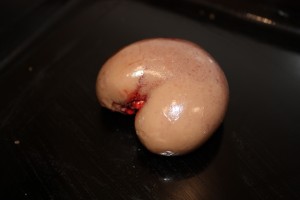June 27th, 2012 § § permalink
Harlem is making a comeback. In a big way. Marcus Saumelsson’s Red Rooster restaurant is a hit. (HG used to drink at the original Red Rooster bar on the Lenox Avenue site during HG’s college days. Then it was a hangout for Harlem intellectuals and artists). Harlem brownstones and condos are selling for millions. Gentrification isn’t happening, it has happened. HG remembers a much older Harlem. The main drag was 125th Street anchored by Blumstein’s Department Store. Harlemites didn’t go uptown to shop. They went to Blumtein’s even though the store didn’t hire African-Americans. It took a vigorous campaign by Adam Clayton Powell Jr. and Benjamin Davis Jr. (forgotten Communist New York City Councilman) to get Blumstein’s to integrate its workforce. The star restaurant on 125th Street was Frank’s. For most of its history, Frank’s wouldn’t serve African-Americans (with the exception of a few politicians and well known entertainers). Joe Louis, the great heavyweight champ (and a onetime publicity client of HG) changed all that. Louis would go to Frank’s with a big crowd of friends and hangers-on. Frank’s couldn’t say no to The Champ. HG lunched at the integrated Frank’s often in the 1950’s. Great steaks.
It may be forgotten, but New York was a viciously racist city in the 1950’s. HG was a journalist at that time and remembers riding with a police official on Central Park South. The policeman spotted an African-American man walking on the street. He pulled over the car and shouted at him: “What are you doing here? You don’t belong here. Get back to Harlem.” The humiliated man walked away rapidly. Did ultra-liberal, leftist HG protest? No. The cop was a top source. So HG kept his mouth shut. HG is still ashamed.
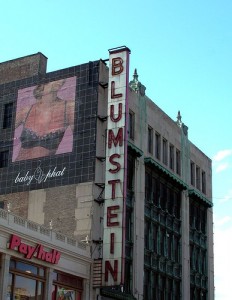
June 13th, 2012 § § permalink
In 1930s New York, many apartment buildings, shops (and restaurants) were designed in a streamlined, modernist style — a kind of Art Deco for the masses. While true Art Deco (which reached its height in Paris of the 20s and 30s) was very elegant and seriously luxurious, the young American designers who piggy backed on the Art Deco style were a bit more egalitarian. Their best efforts, in terms of major structures, can be seen in the apartment houses that line the Grand Concourse in the Bronx and the glorious hotels of Miami’s South Beach. Smaller design gems were the chain bakeries that flourished in all of New York’s neighborhoods. The aim of all the “streamlining” was to give shoppers an optimistic lift in the gloom of the Great Depression. The “streamlined” bakeries were Cushman’s and Hanscom’s. The famed industrial designer Raymond M. Loewy designed Cushman’s and Horace Ginsbern designed Hanscom’s. (Ginsbern, then fairly young, later became one of New York’s most prominent apartment house architects. Ginsbern was born in 1893 and died in 1969. Scores of his buildings exist in Manhattan’s Upper East Side).
The architect Robert A.M. Stern has commented on the Loewy and Ginsbern bakery designs: “They brought a relatively high level of International Style Modernism into virtually every New York neighborhood.”
Cushman’s had white porcelain facades; nautical, oval windows and the name was spelled out in a curving, gold script. Hanscom’s had apple green porcelain facades and the name was formed with blocky, super- modern letters. Stern described the entire architectual composition as “Constructivist.”
In the Bronx you had Jewish Bakeries and Italian bakeries. The Jewish bakeries had elaborate butter cream cakes and, of course, bagels, bialys, rye and pumpernickel bread, etc. These were jammed on Sunday mornings with Dads buying bread-stuffs for brunch (The casual tweed and camel hair jackets many of them wore were known as “bagel coats”). The Italian bakeries, in neighborhoods like Belmont, had, of course, sublime bread, delicious cannolis, pignoli cookies and other Italian specialties. There was plenty of cross pollination. Jews liked the corn muffins and cookies at Cushman’s and Hanscom’s (which were generalized as goyish bakeries) and there were plenty of bagel and rye bread fanciers among the non-Jewish population. And, of course, everyone loved their Italian baked goods. Some Jewish bakery survivors in Manhattan are Moishe’s Bakery on 2nd Ave, Streit’s, which bakes and sells matzos, macaroons, kichel and other stuff from a 47,000 foot factory on Rivington Street and Kossar’s which bakes and sells bialys and other traditional good stuff from a location near the Essex Street Market. SJ sent HG a batch of Kossar’s products a few months ago producing moans of delight. The eminent food writer, Mimi Sheraton, a woman who knows Jewish food, says a Kossar’s bialy is the only true bialy baked in the United States. HG agrees.
Interestingly, HG’s Mom never called a bialy by that shortened name. She paid appropriate homage by calling it a Bialyosteker Kuchen.

June 8th, 2012 § § permalink
Sutter’s Bakery. Just say these two words to old New Yorkers and watch their happy faces as they rummage through delicious memories. The Manhattan location of Sutter’s Bakery was at Greenwich Avenue near Sixth Avenue. Next door was the later demolished Women’s House of Detention (Ladies of the night were locked up there and had animated conversations through the bars with their business agents gathered on the sidewalk below). Sutter’s had the best pecan ring, Danish pastries, cookies, croissants, brioche, etc. It was a big place with outstanding variety. (There were equally great Sutter’s on the Grand Concourse in The Bronx and Flatbush Avenue in Brooklyn). HG and BSK recall many happy, Winter Sunday mornings during their early married days. The Sunday Times. Radical radio station WBAI broadcasting subversive joy. Sutter’s gently warmed croissants and brioche. Sweet butter. English marmalade. Steaming mugs of Droste’s cocoa. Snow might have been pelting down W. 67th Street and the wind might have been whistling a frigid tune. But, all was toasty joy in HG and BSK’s rent controlled paradise.
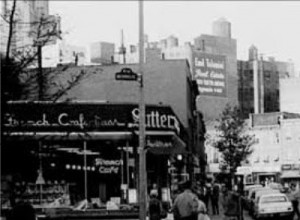
May 27th, 2012 § § permalink
That’s a question HG often puts to himself. HG is referring to drinking habits in the 50s and for most of the 60s. In those halcyon days, HG lunched daily in Manhattan restaurants with journalists, pals or HG’s public relations clients. Typical lunch at the Blue Ribbon, very good German restaurant on W. 45th (convenient for journalists from Times, Herald-Tribune, Newsweek and Business Week): Two dry martinis with Rollmops Appetizer (Bismarck herring rolled around a dill pickle); steak tartare or bratwurst or Kassler Rippchen (smoked pork chop) washed down with two large, dark beers. Cognac and a cup of black coffee to finish. At Russian Tea Room, HG drank chilled vodka throughout a lunch of Eggplant Oriental, Borscht with Pirozhki (flaky meat pastries) or Siberian Pelmeni (tiny Russian ravioli in a rich chicken consomme infused with generous quantities of chopped dill, sour cream and strong mustard). Wine, of course, accompanied the food at Sardi’s, Four Seasons, Gino’s. Patsy’s, Charles, Christ Cella, etc. But, two martinis always jump started the lunch. After lunch, an energetic HG was back at work. Focused. Productive. HG was not alone. Men (and women) drank cocktails at lunch — Martinis, Manhattans or Whiskey Sours. How could we function with so much lunchtime booze? We did. And, it was fun.

May 23rd, 2012 § § permalink
HG flexed his dining muscles in the 1950’s when New York restaurants were very inexpensive and contained many delights for the adventurous fledgling gourmand. An HG favorite was a warm and friendly French bistro, Fleur de Lis, located at 141 W. 69th Street. It was here that HG delved into the wonderful world of innards prepared in traditional French style. Brains in black butter. Tripe in the style of Caen. Roast kidneys and kidneys in mustard sauce. Tete de Veau (all the little goodies plucked from the head of a cow and served in a thick vinaigrette). Sweetbreads in a lush red wine sauce.These dishes ranged in price from $1.35 to $1.60. Yes, you read it right. A generous plate of Sole Meuniere was $1.15 as was a heaping bowl of mussels (accompanied by pomme frites). The most expensive dish on the menu was a one and-a-half pound lobster for $3.00. HG liked to start the meal with Saucisson and warm potato salad ($.35) or pickled herring ($.35) or a copious crabmeat cocktail ($.50). Red and white wine was served by the glass ($.25). A nice aperitif was dry, chilled sherry ($.25). The cheese selection was composed of Camembert, goat, Port du Salut and blue cheese. Served generously and at the right temperature ($.25 each) Went nicely with port ($.25 a glass). Desserts included creme caramel and chocolate mousse (each $.35). All of these prices are from the Nov. 1955 Fleur de Lis menu.
At that time, HG was a highly paid journalist ($175 a week) who supplemented his pay by moonlighting as a press agent. When HG and BSK wed in 1963 they lived at 27 W. 67th Street in a dramatic artist’s studio one bedroom apartment (Rent: $140 a month). HG had left journalism for the more lucrative field of press agentry. The nearby Fleur de Lis was still going strong and the newlyweds ate there often. Prices had risen, of course, but the bistro remained quite affordable. On their wedding night (a sultry and stuffy July night) HG and BSK dined there with family members. HG had escargots (lots of garlic), mussels (lots of garlic), rare tenderloin steak (lots of garlic). Later that night, in their non-air conditioned bedroom, BSK contemplated HG, her sleep companion, her husband, her life-long partner and what she saw was a hairy man with fragrant garlic oozing from every sweaty pore. It crossed BSK’s mind then (and probably not the only time during the ensuing 49 years) that she had made a dreadful mistake.

May 18th, 2012 § § permalink
Anyone remember these coffee and fast food counter restaurants that once flourished in New York? There were about 80 locations before the chain closed in the 1970s. The coffee brand still flourishes and is sold in supermarkets everywhere. At Chock Full you got a very good cream cheese sandwich on nutted date bread (a favorite of female office workers), whole wheat doughnuts (best doughnut ever, in HG’s opinion), good frankfurters and orange drink. Splendid coffee, of course. Very, very cheap. Swift service by unsmiling, sullen, very angry African-American women. William Black, who owned the chain, tried to make morale better by hiring baseball great Jackie Robinson as Director of Personnel in 1957. Didn’t make any difference. It was still Service-With-A-Sneer. All food at Chock Full was handled with tongs (for alleged hygienic benefits) and advertised “Food Untouched By Human Hands.” The chain got its unusual name from Black’s retail start: a little shelled nut store he opened in 1926. It grew to a chain of 18. Black, a smart (and eccentric) guy, met the challenge of the Great Depression by converting the nut shops to lunch counters in 1931. The signature cream cheese sandwich and a cup of coffee was five cents. Big success. Black married a cabaret singer named Page Morton. For many decades New York radio and TV commercials featured the rather mature, slightly off-key and quite wavery-voiced Ms. Morton singing the Chock Full O’ Nuts coffee jingle: “Chock Full O’ Nuts — That Heavenly coffee.” The persistence of this ad and her suspect talent made it obvious that Black really loved his wife.
After many corporate shifts and buy outs, Chock Full (now owned by an Italian coffee giant), decided, in 2010, to open a Chock Full O’ Nuts restaurant, serving some of the old favorites, on E. 23 Street in the Flatiron District. Very extensive menu. Very slow service. A mixed reception from diners. The cream cheese sandwich costs $4.95.

May 10th, 2012 § § permalink
The Oak Room in New York’s venerable Plaza Hotel was, in HG’s opinion, the most history-drenched and comfortable restaurant in New York. Alas, HG just learned, the beautiful room has closed. HG has written before about happy times there and merry martini sipping in the adjacent Oak Bar. Memories: Tournedos with Bearnaise Sauce and Souffle Potatoes. Braised Celery with Beef Marrow. Cary Grant (looking and behaving like Cary Grant) at an adjoining table. HG had a charge account at the Oak Room and a tendency to run up large bills. HG, during that cycle in HG’s professional life, did not pay bills promptly. HG relished the good manners and courtesy of the gentle letter he received from the Oak Room management when HG was six months in arrears: “It appears that due to the many pressures and obligations of your career, you may have overlooked etc., etc.,etc.”
HG always paid…Eventually.
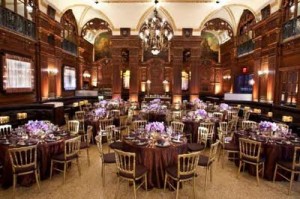
April 29th, 2012 § § permalink
HG rarely waves the flag, believing, to paraphrase Dr. Johnson, that patriotism is the last refuge of fools and knaves. However, when it comes to steak, HG is a red-blooded, Yankee Doodle boy. Nothing compares to American steak (prime,of course). HG never had a good steak in Paris. Much lauded steak frites in a Paris bistro would get thumbs down from discerning New Yorkers (men and women who learned to eat steak on Steak Row and at Peter Luger’s). Alec Lobrano, the most informed and fair minded of Paris food writers, likes the steak at Le Severo in that city. HG and BSK sampled the steak there and found it only passable. However, steak tartare at Severo and at Le Stella and many other Paris eateries is exemplary. German restaurants in New York prepared great steak tartare in years gone by (Luchow’s covered its steak tartare with a generous layer of black beluga caviar). The great raw beef dish disappeared along with New York’s most fabled German restaurants.
If you rent an apartment in Paris, visit the Hugo Desnoyer butcher shop in the 14th and buy a rump steak (Lobrano’s suggestion) and grill it at home. And, if you’re renting a New York apartment, pick up a New York strip at Lobel’s on Madison Avenue. One pound strip: $47.98. (Hey, you only live once).
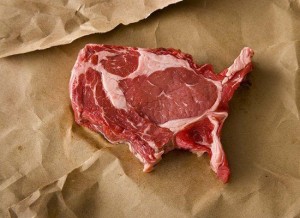
April 23rd, 2012 § § permalink
Just say the word — Nedick’s — and you’ll get a nostalgic sigh from old New Yorkers (or ex-New Yorkers like HG). Nedick’s was a New York fast food chain that served hot dogs on toasted, buttered rolls. HG would top these superior tube steaks with Nedick’s special mustard relish and wash them down with an ice cold orange drink. Two dogs and a drink — 30 cents — a true recession buster. HG’s favorite Nedick’s location was at 161st Street and Jerome Avenue in The Bronx. Very convenient for a bite after a baseball or football game at Yankee Stadium or a sandlot football game at adjacent McCombs Field (HG was a star halfback on the Barnhills, a rough and ready sandlot team).
Nedick’s is part of HG’s unconscious. Nedick’s was the sponsor of New York Knick broadcasts and when a Knick scored, announcer Marty Glickman would intone: “Good — like Nedick’s!!” A few days ago, HG watched New York Knick Carmelo Anthony light up the scoreboard. At a particularly exciting moment, HG found himself shouting at the TV in the voice of Glickman: “Good — like Nedick’s!!” Marty Glickman has passed on. Nedick’s is gone. Efforts to revive the chain have failed. The old Yankee Stadium is gone, replaced by a shiny new model. HG and the Knicks remain. Functional but flawed.
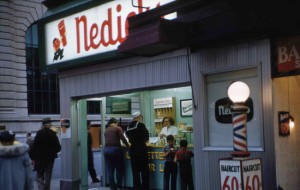
April 17th, 2012 § § permalink
After a basketball game, hockey or boxing match at the old Madison Square Garden (50th Street and 8th Avenue in New York) HG and pals would often go to a long departed German restaurant, Blue Ribbon, located on West 45th. They would devour a huge apple pancake and wash it down with dark beer. The apple pancake was almost 18 inches in diameter and rich with cinnamon, sugar and melted butter. It was thin as a pizza and served on a similar hot, round metal platter. The dish has disappeared. HG hasn’t encountered on a menu for more than 30 years.
The same goes for smoked kippers and eggs, a true breakfast treat that was found in even the most basic New York coffee shop. Gone. Chicken livers seem to have disappeared as well. In New York, the Schrafft’s chain used to serve sauteed livers on buttered toast; French bistros would top salads with them and they were a staple of many pasta sauces in Italian restaurants.
Lamb chops accompanied by grilled kidneys. This was a common pairing (like calf’s liver and bacon). Sure, lamb chops still thrive; but now they’re a solo act – the kidney having been cruelly cast aside.
